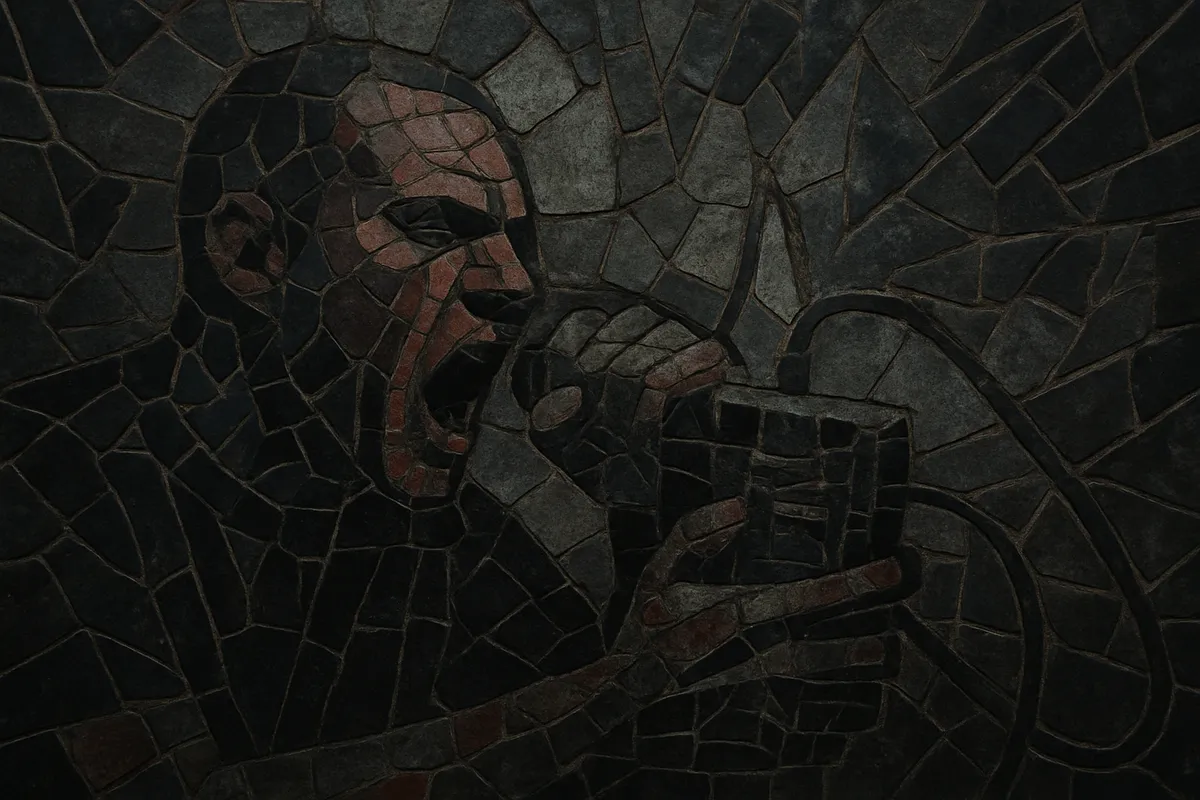
Power electronics is an extreme, confrontational branch of post-industrial noise built around high-gain oscillator tones, mixer feedback, and screamed or declaimed vocals. It prioritizes texture, loudness, and psychological intensity over conventional rhythm, melody, or harmony.
Developed to push beyond the boundaries of early industrial music, the style often employs simple but punishing signal chains—oscillators into distortion and filtering—alongside tape manipulation, contact mics, and live feedback loops. Lyrical content tends to be provocative, examining power, control, and taboo subjects as critique or transgression. The result is a stark, minimal, and abrasive sound designed to unsettle and overwhelm.
The term "power electronics" was popularized by William Bennett (Whitehouse) in the early 1980s to distinguish a harsher, more minimal and aggressive strain of post-industrial sound from the broader industrial scene. Rooted in the UK, the style drew heavily on Throbbing Gristle’s industrial groundwork but dispensed with rock structures, focusing instead on piercing oscillator tones, mixer feedback, and confrontational vocal performances. Whitehouse’s Come Organisation and Gary Mundy’s Broken Flag (Ramleh) became key conduits, alongside early Italian and Australian noise-industrial figures such as Maurizio Bianchi (MB) and SPK.
As the aesthetic coalesced, artists like Sutcliffe Jugend, Ramleh, and NON (Boyd Rice) codified a stark, minimal approach: few elements, maximum intensity. Releases were often limited, DIY, and circulated through underground tape networks and fanzines. Performances sought to provoke—sonically and thematically—using volume, proximity, and abrasive subject matter to confront audiences with questions about violence, authority, and media.
European labels such as Cold Meat Industry (Sweden) and Tesco Organisation (Germany) nurtured adjacent styles (notably death industrial) that borrowed PE’s severity while introducing grim atmospheres and heavier low-end. Acts like Genocide Organ, Brighter Death Now, Con-Dom, and Anenzephalia became reference points, while the US saw a surge of harsh noise and PE crossovers (e.g., Prurient, Bloodyminded), with Hospital Productions acting as a major hub. Japan’s noise milieu (e.g., Merzbow, Incapacitants) intersected aesthetically with PE even when operating under the broader “harsh noise” banner.
Power electronics remains influential across death industrial, harsh noise wall, and darker strains of experimental electronics. It continues to court controversy for its use of shocking imagery and subject matter; within the scene, debate persists over intent, context, and responsibility. Contemporary artists have refined production approaches—balancing analog grit with precise digital control—while preserving the genre’s core goals: intensity, severity, and the interrogation of power.
Oscillator/Feedback Source → Distortion/Fuzz → Filter/EQ → Compressor → Mixer Feedback Loop (aux) → Final Limiter → PA/Recording.

